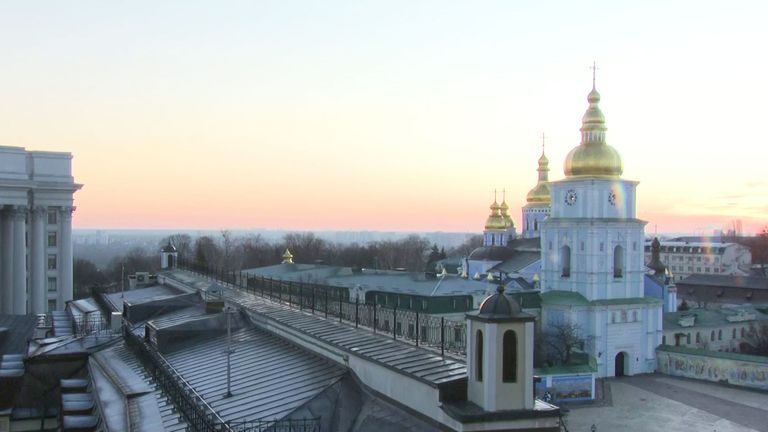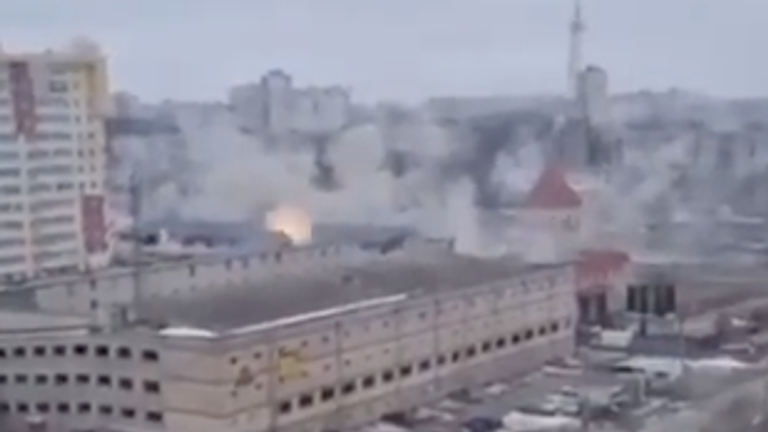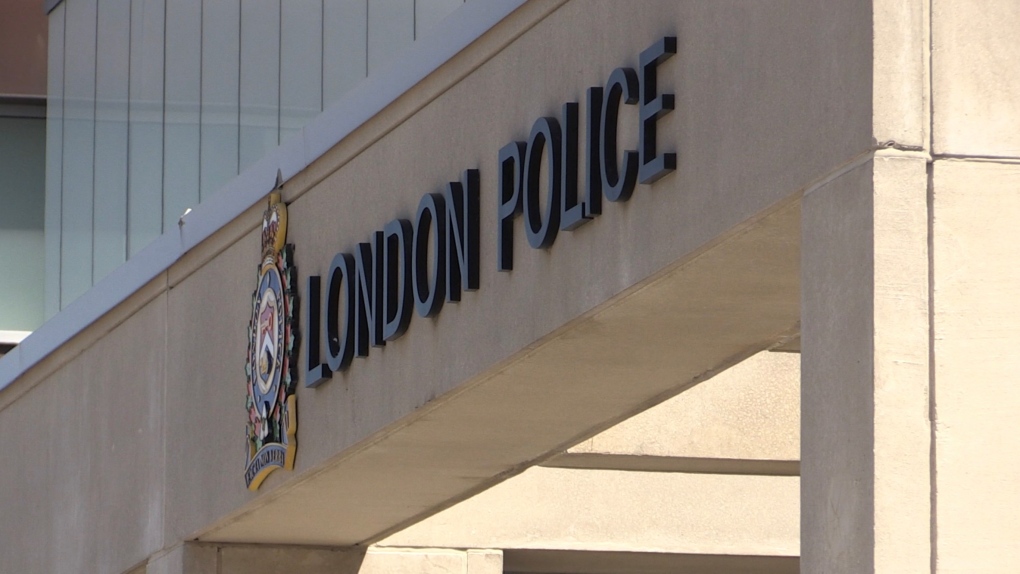Vladimir Putin has raised alarm across the world by placing his nuclear deterrent forces on high alert.
But what atomic weapons does Russia possess and what might it use them for? We’ve taken a look.
How many nuclear weapons does Russia have?
According to the Federation of American Scientists, Russia has a total nuclear warhead inventory of 5,977 – this is the biggest in the world.
In comparison, the US has 5,428 while France has 290 and the UK has 225.
Read more:
More than 70 Ukrainian soldiers killed by Russian artillery fire – follow latest updates
The Bulletin of the Atomic Scientists says the Russian arsenal includes 4,447 warheads of which 1,588 are deployed on ballistic missiles and at heavy bomber bases.
It says there are an “approximate additional 977 strategic warheads, along with 1,912 nonstrategic warheads” being held in reserve.
However, experts have said the exact number of warheads and weapons is not known due to secrecy surrounding security strategies and concerns.
What threat do the weapons pose to Ukraine and the wider world?
Intercontinental ballistic missiles (ICBMs) in Russia’s possession have the capability to reach and destroy major global cities such as London or Washington.
ICBMs can reach a top speed around 10 minutes after launch which could see one fired from Russia reach the UK in just 20 minutes.
Defence expert General Sir Richard Barrons told Sky News: “President Putin has raised the stakes – he’s started to insinuate nuclear weapons at a global level.
“This means the sort of equipment [like] an intercontinental ballistic missile – that means it reaches from Russia to the US and obviously into Europe.
“The warhead at the front of it has a yield of between 300 and 800 kilotonnes [of TNT equivalent].
“Three hundred kilotonnes is enough to destroy Washington or London or Paris.
“We should understand that the stakes for Ukraine have now become global.
“Essentially by raising the spectre of nuclear weapons, the rest of the Western hemisphere is now on the pitch with Ukraine.”
Image:
A ballistic missile system has the potential to bring major devastation to cities across the world, experts say. File pic
He added other equipment which can fire smaller weapons would still bring devastation to their target.
For example, the 2S7 gun – 203mm calibre – has a range of about 37km [22 miles] and fires a shell that weighs 110kg.
Sir Richard added: “It can also fire a nuclear shell with a yield of about one kilotonne – one thousand tonnes of TNT equivalent.
“So when President Putin starts to talk about nuclear options, he may have in mind something like this.
“Then he may turn to the Iskander missile – a range of about 500km [310 miles].
“In its conventional guise, it fires a missile with a 480kg warhead, which is massive, with an accuracy of about five metres.
“It can be used to fire a nuclear weapon with a yield of between five and 50 kilotonnes.
“So with that range and with that sort of yield it would be absolutely devastating.”
Kyiv braces for ‘onslaught’
Is Russia’s stockpile likely to change?
The Russians have been continuing a “comprehensive” modernisation programme to replace most of the weapons inherited from the Soviet era.
It is also said to be introducing new types of weapons.
Hans M Kristensen and Matt Korda, writing for the Bulletin of the Atomic Scientists, stated: “As of early 2022, we estimate that Russia has a stockpile of approximately 4,477 nuclear warheads assigned for use by long-range strategic launchers and shorter-range tactical nuclear forces, which is a slight decrease from last year.
“Of the stockpiled warheads, approximately 1,588 strategic warheads are deployed: about 812 on land-based ballistic missiles, about 576 on submarine-launched ballistic missiles, and possibly 200 at heavy bomber bases.”
The Bulletin also states that as of 23 February “some of the Russian delivery vehicles that are deployed near Ukraine are considered to be dual-capable, meaning that they can be used to launch either conventional or nuclear weapons”.
Cluster munition strikes buildings in Kharkiv
What would be the expected procedure for Russia to launch a nuclear weapon?
The country’s president, defence minister or chief of the general staff must give permission through what is called the Cheget nuclear suitcase.
Russian nuclear doctrine allows for use of what is known as a tactical nuclear weapon – a limited nuclear explosion – to be deployed in a conventional conflict to make the enemy back down.
Strategic nuclear weapons can hit targets much further afield, such as the US.
Tactical nuclear weapons is the term used for those deployed on a battlefield, such as Ukraine.
Follow the Daily podcast on Apple Podcasts, Google Podcasts, Spotify, Spreaker
Globally, what is happening to the amount of nuclear weapons?
Other countries are buying or developing their own new missiles, driven by security concerns and a desire to reduce reliance on other suppliers.
Before the decade is out, Asia in particular will be bristling with conventional missiles that fly further and faster, hit harder, and will be more sophisticated than ever before.
China is mass-producing its DF-26 – a multipurpose weapon with a range of up to 4,000km (2,485 miles).
The US is developing new weapons aimed at countering Beijing in the Pacific.
Taiwan and Japan are also boosting their missile capabilities, as well as defence systems designed to counter missile threats.
The Federation of American Scientists said nine countries possessed around 12,700 warheads as of early 2022.
https://news.sky.com/story/ukraine-invasion-what-nuclear-weapons-does-russia-possess-and-what-might-it-use-them-for-12554087






